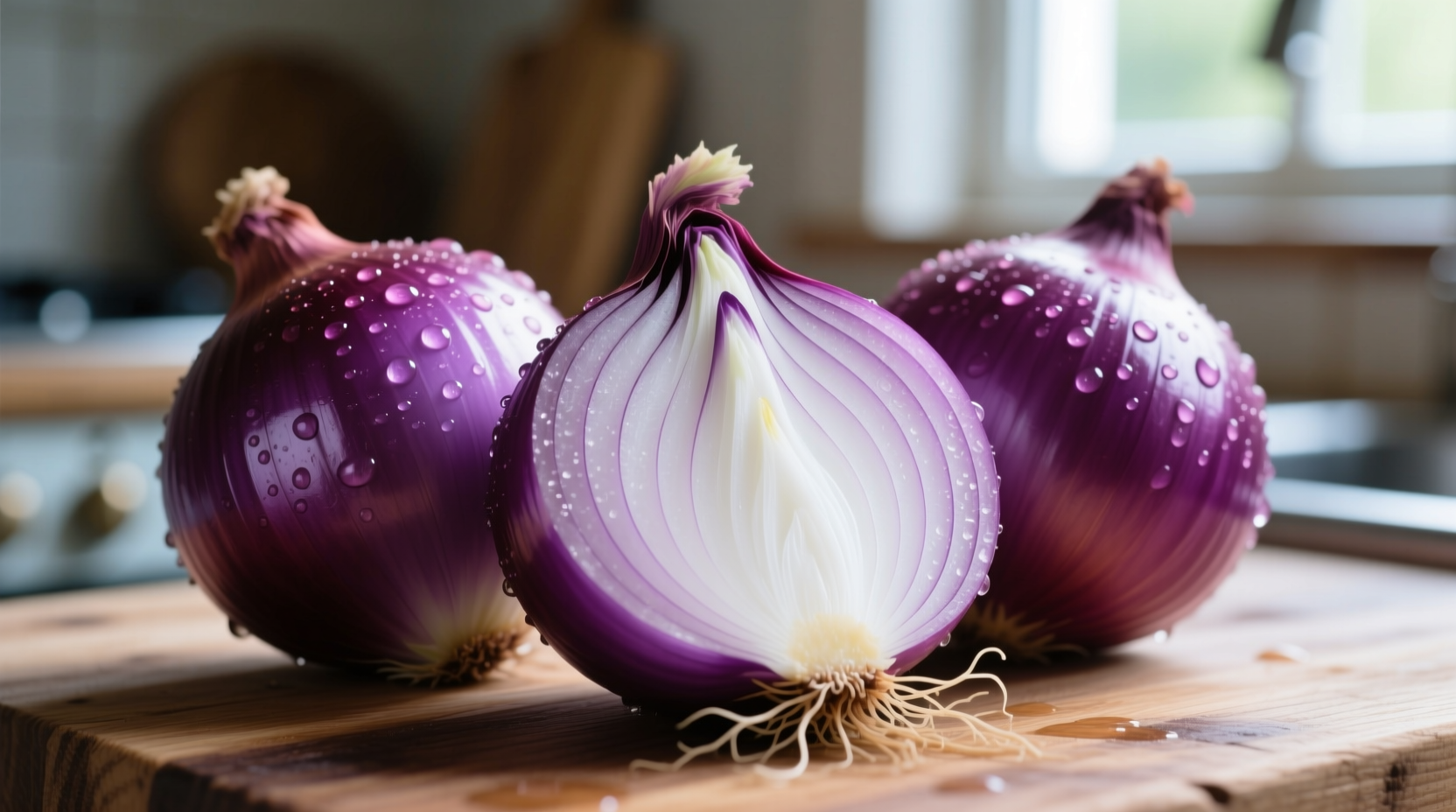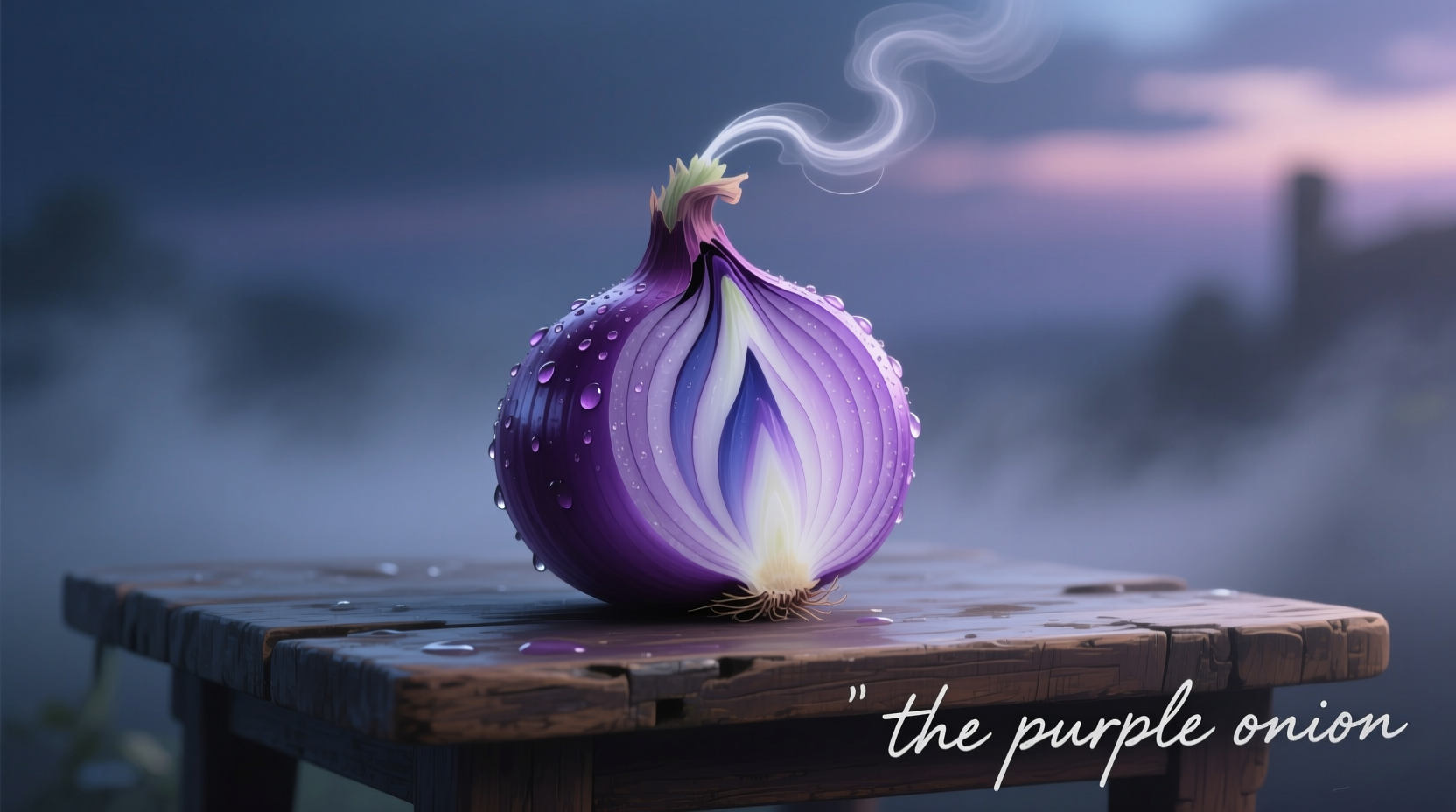Why Chefs Reach for Purple Onions First
When you slice into a purple onion, you're unlocking more than just color. These alliums offer a delicate balance between sharpness and sweetness that transforms dishes without overwhelming other ingredients. Professional kitchens consistently choose them for raw applications where milder flavor and visual contrast matter most.
Understanding Purple Onion Varieties
Not all purple onions are created equal. The term encompasses several distinct varieties with subtle differences in flavor intensity and storage capabilities:
- Red Torpedo – Elongated shape, exceptionally sweet, ideal for salads
- Red Creole – Smaller bulbs, more pungent flavor, excellent for pickling
- Walla Walla Sweet Red – Larger size, minimal sharpness, perfect for grilling
| Onion Type | Flavor Profile | Best Culinary Use | Storage Duration |
|---|---|---|---|
| Purple/Red | Mild to moderate sharpness | Raw applications, salsas, salads | 2-3 weeks refrigerated |
| Yellow | Strong, robust flavor | Caramelizing, cooking, soups | 2-3 months room temperature |
| White | Sharp, clean bite | Mexican cuisine, pico de gallo | 3-4 weeks refrigerated |
The Science Behind the Color
Purple onions get their distinctive hue from anthocyanins, water-soluble pigments sensitive to pH levels. When exposed to acidic ingredients like vinegar or citrus, they maintain their vibrant color. In alkaline environments, they can turn an unappetizing blue-green.
According to research published in the Journal of Agricultural and Food Chemistry, purple onions contain up to 25 different anthocyanin compounds, with quercetin being particularly abundant. These compounds contribute to the onion's antioxidant capacity, which USDA nutritional data shows is approximately 20% higher than yellow onions.

When Purple Onions Shine (and When to Choose Alternatives)
Understanding context boundaries helps maximize purple onions' potential in your cooking:
Perfect Applications
- Raw preparations – Their milder bite works beautifully in salads, sandwiches, and as garnishes
- Pickling – They transform into stunning pink pickled onions that elevate tacos and burgers
- Salsas and relishes – Provide visual contrast without overpowering other ingredients
When to Choose Yellow Onions Instead
- Long-cooked dishes – Purple onions break down more quickly and can discolor sauces
- Caramelizing – Their sugar content is lower, resulting in less complex flavor development
- Stocks and broths – They can impart unwanted color to clear liquids
Maximizing Freshness and Flavor
Proper selection and storage significantly impact your culinary results:
Selection Tips
- Choose firm bulbs with dry, papery skins
- Avoid onions with soft spots or signs of sprouting
- Heavier onions typically indicate higher moisture content and freshness
Storage Techniques
- Store whole bulbs in a cool, dark place with good air circulation
- Refrigerate cut onions in airtight containers for up to 10 days
- Freeze diced onions for cooking applications (not recommended for raw use)
Avoiding Common Preparation Mistakes
Even experienced cooks sometimes miss these critical details:
- Discarding the outer layers too aggressively – The highest concentration of anthocyanins exists in the outer rings
- Using metal cutting boards – Can accelerate oxidation and cause discoloration
- Adding to dishes too early in cooking – Heat diminishes both color and delicate flavor
Culinary Traditions Across Cultures
Purple onions have played significant roles in global cuisines throughout history:
| Era | Culinary Development | Historical Significance |
|---|---|---|
| Ancient Egypt | Used as worker payment | Found in pharaohs' tombs as symbolic offerings |
| Renaissance Europe | Featured in still-life paintings | Symbolized prosperity and health |
| 19th Century America | Popularized in Southern cuisine | Key ingredient in early barbecue traditions |
| Modern Era | Global salad staple | Recognized for antioxidant properties |
Practical Applications for Home Cooks
Transform your everyday cooking with these professional techniques:
Quick Pickling Method
Combine thinly sliced purple onions with equal parts vinegar and water, plus 1 tablespoon sugar per cup. Let sit for 30 minutes for vibrant pink pickled onions that elevate tacos, burgers, and sandwiches.
Salad Enhancement
Soak sliced onions in ice water for 10-15 minutes before adding to salads. This simple step reduces sharpness while maintaining crisp texture—a technique used in high-end restaurants worldwide.
Grilling Technique
Leave root end intact, slice vertically, brush with olive oil, and grill cut-side down for 3-4 minutes. The natural sugars caramelize beautifully while maintaining structural integrity.











 浙公网安备
33010002000092号
浙公网安备
33010002000092号 浙B2-20120091-4
浙B2-20120091-4